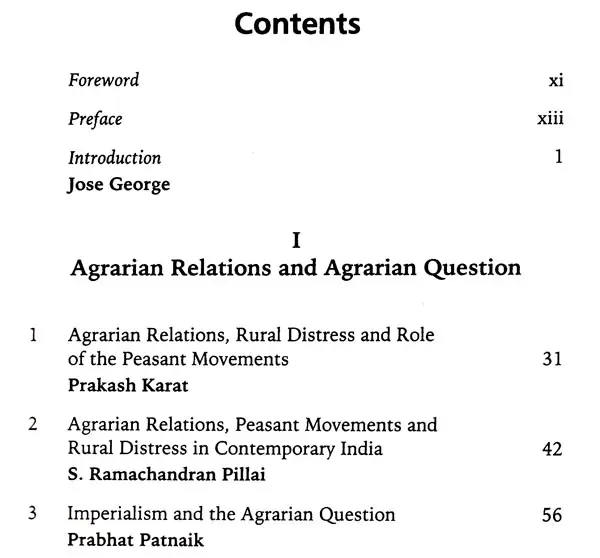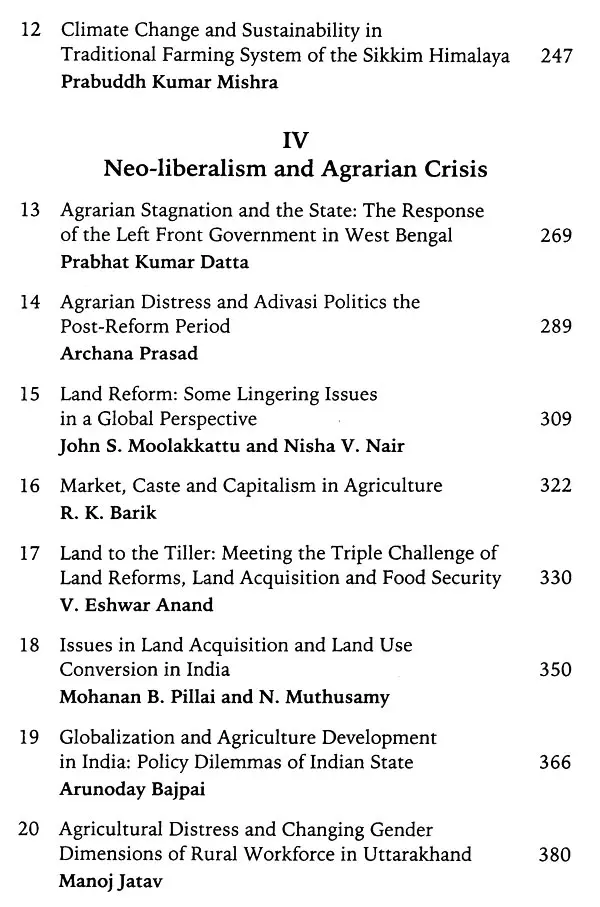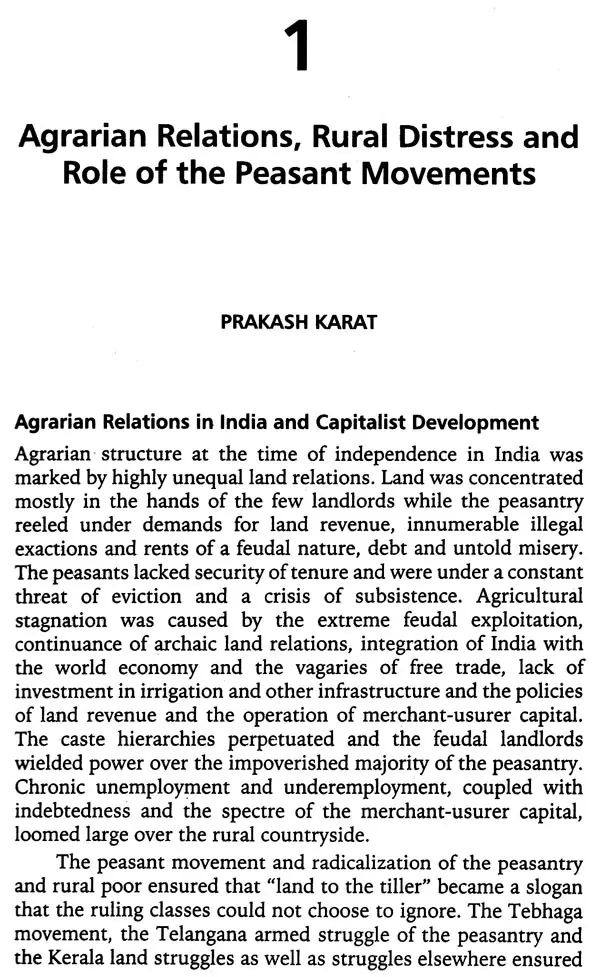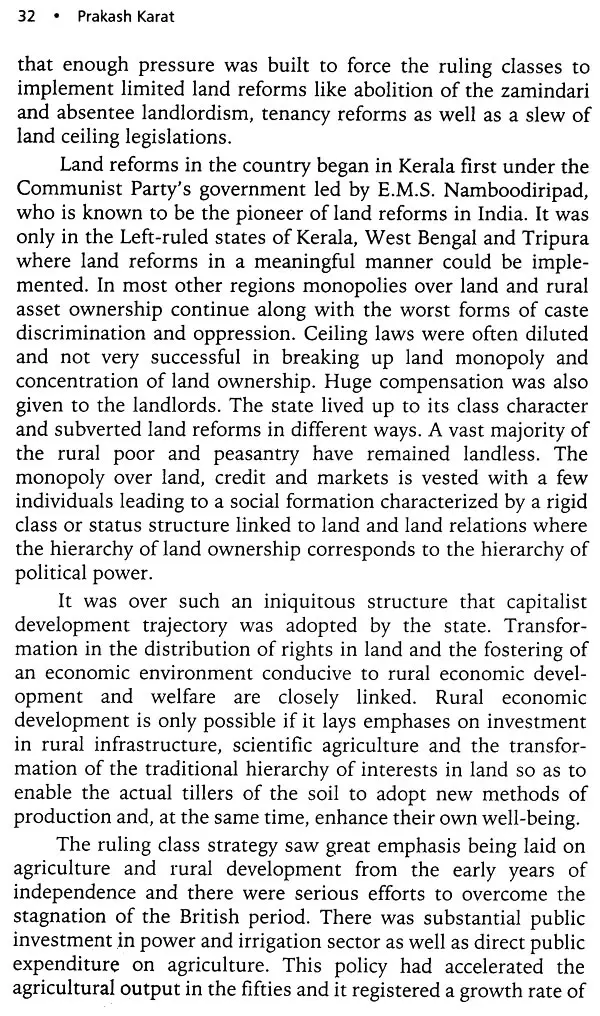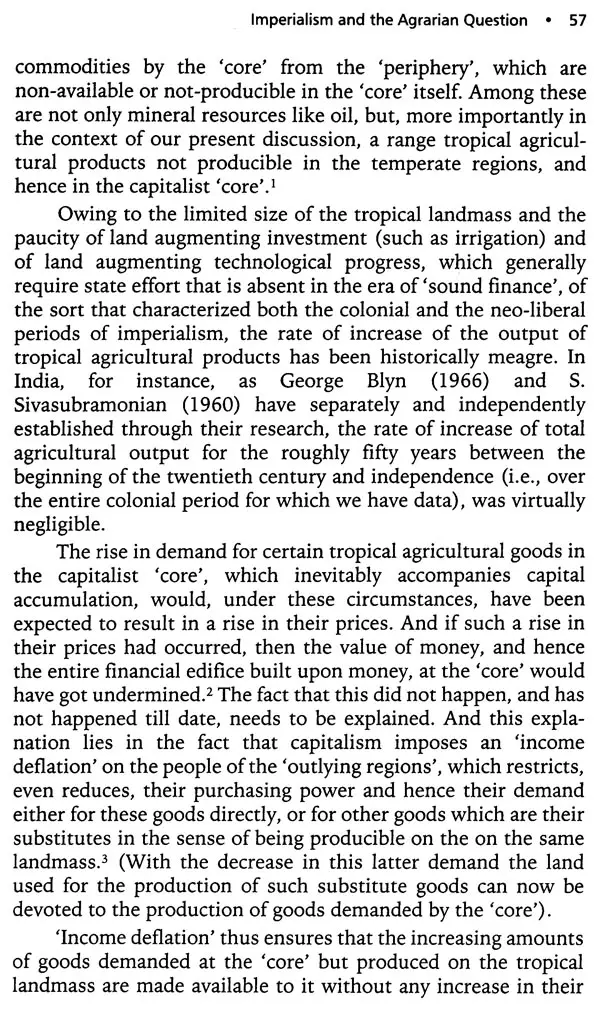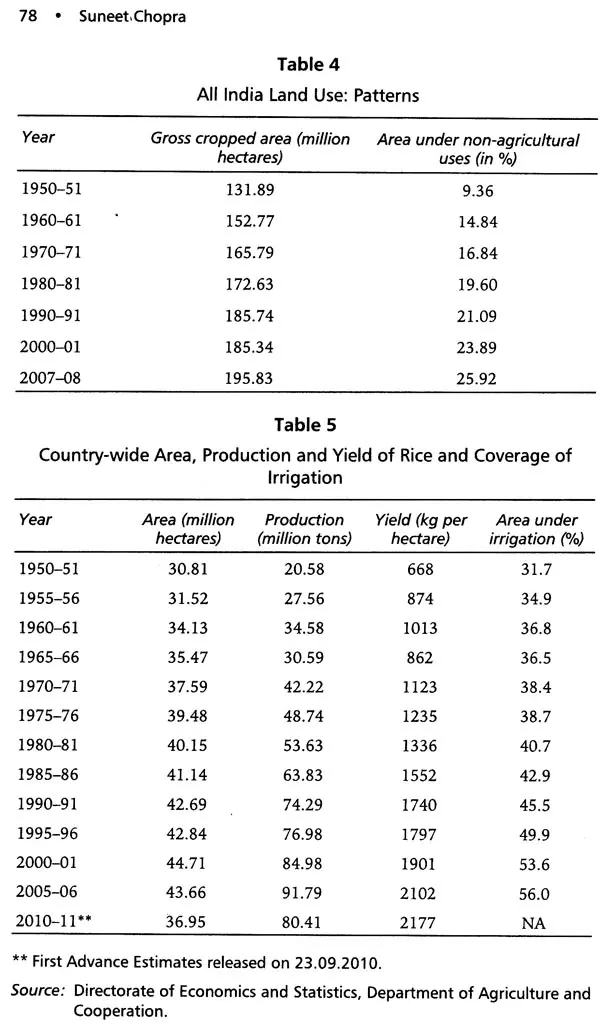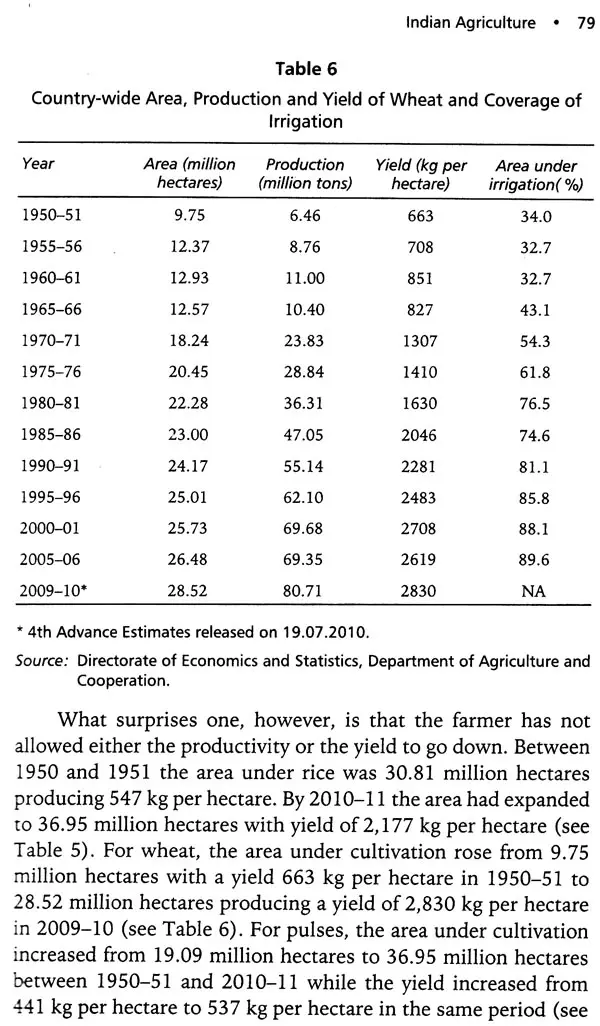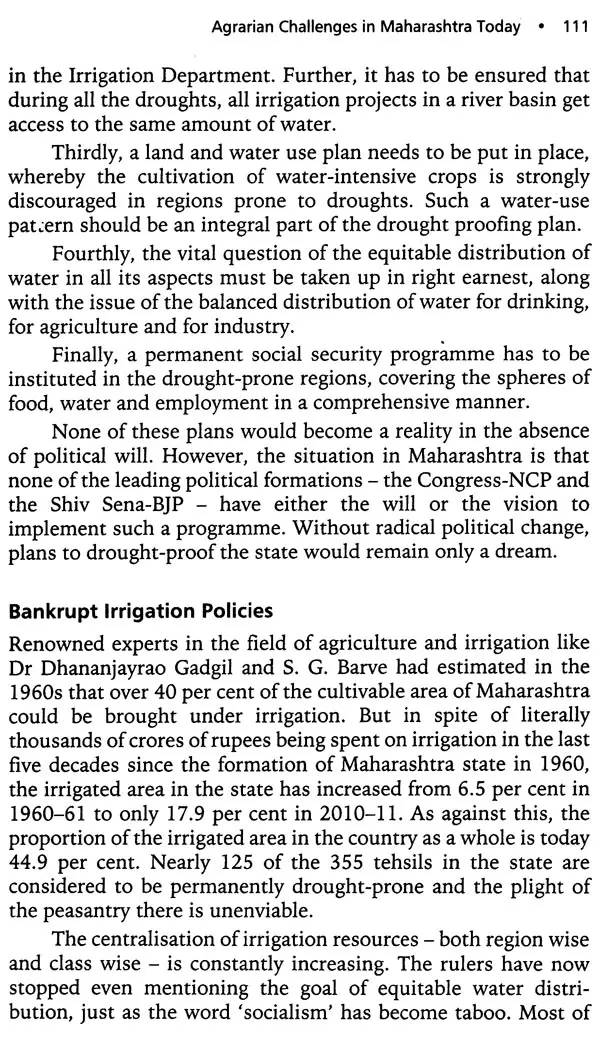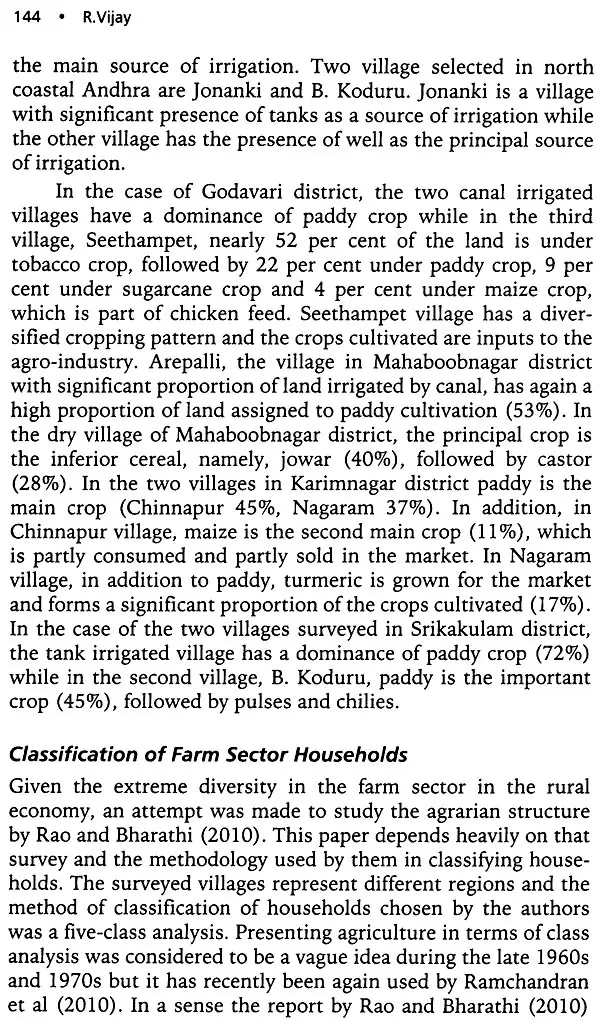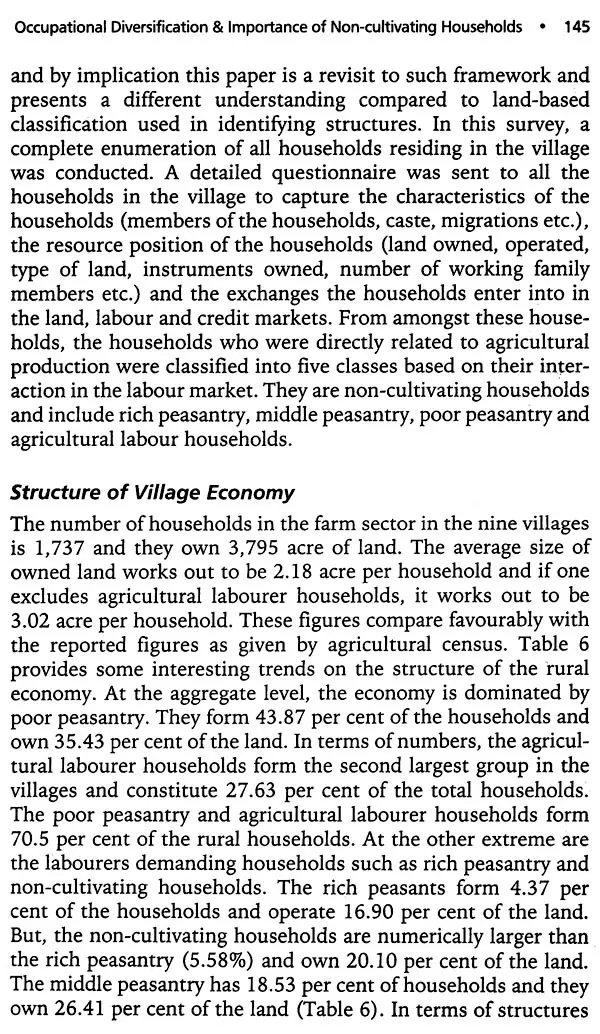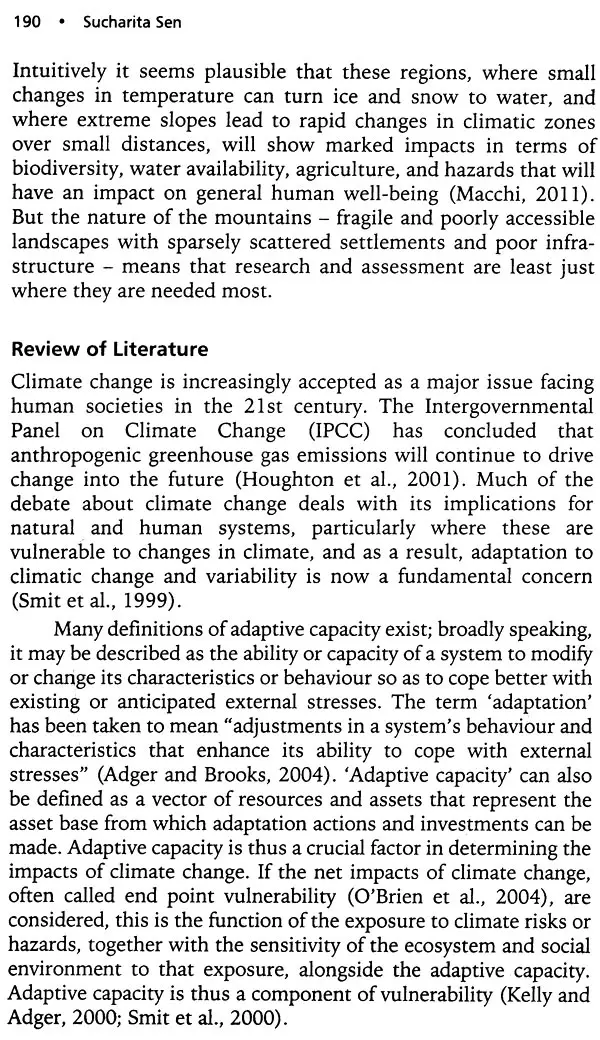
Agrarian Relations, Peasant Movements and Rural Distress in India
Book Specification
| Item Code: | UBD533 |
| Author: | Jose George |
| Publisher: | NavVishnu Publications, Mumbai |
| Language: | English |
| Edition: | 2017 |
| ISBN: | 9788193330739 |
| Pages: | 465 |
| Cover: | HARDCOVER |
| Other Details | 8.50 X 5.50 inch |
| Weight | 600 gm |
Book Description
This book, Agrarian Relations, Peasant Movements and Rural Distress in India, edited by Dr Jose George, is an outcome of an international seminar, organized by the Department of Civics and Politics, University of Mumbai.
Agrarian relations in India have been undergoing rapid changes firstly under the impact of capitalist development and later under the neo-liberal phase of capitalism. It is necessary to study these changes, which have brought about not only structural changes in agrarian relations, but also resulted in rural distress. It is on the basis of a clear understanding of the causes for the agrarian crisis that an alternative path for agricultural development and national development worked out.
The papers included in this book have sought to address the nature of the changes in agrarian relations, the causes of peasant and rural distress and suggested the alternative policy trajectory for agricultural and rural development.
The neo-liberal policies adopted in the agrarian field have led to increasing dispossession of the peasantry and their land and other means of production. Similarly, privatization and opening of the global markets have led to systematic impoverishment of the poor and marginal peasants. The cut in public investment in agriculture has contributed to the ongoing agrarian crisis.
India is predominantly an agricultural country. Nearly two-third of the country's population depends on agriculture as the principal source of livelihood. The history is witness to this fact that the problems of farmers and rural poor mostly resulted from the oppressive pattern of agrarian structure and relations, including the pattern of land use. Due to slow but continuous entry of capitalism in agriculture, the hardships of poor farmers and agriculture workers further deteriorated. Independent India, under compelling national and international situations that posed danger to the bourgeois-landlords combine, adopted national policy on land issue and enacted land reforms to be implemented in every state of the country which, in reality, remained largely uneven.
**Contents and Sample Pages**

